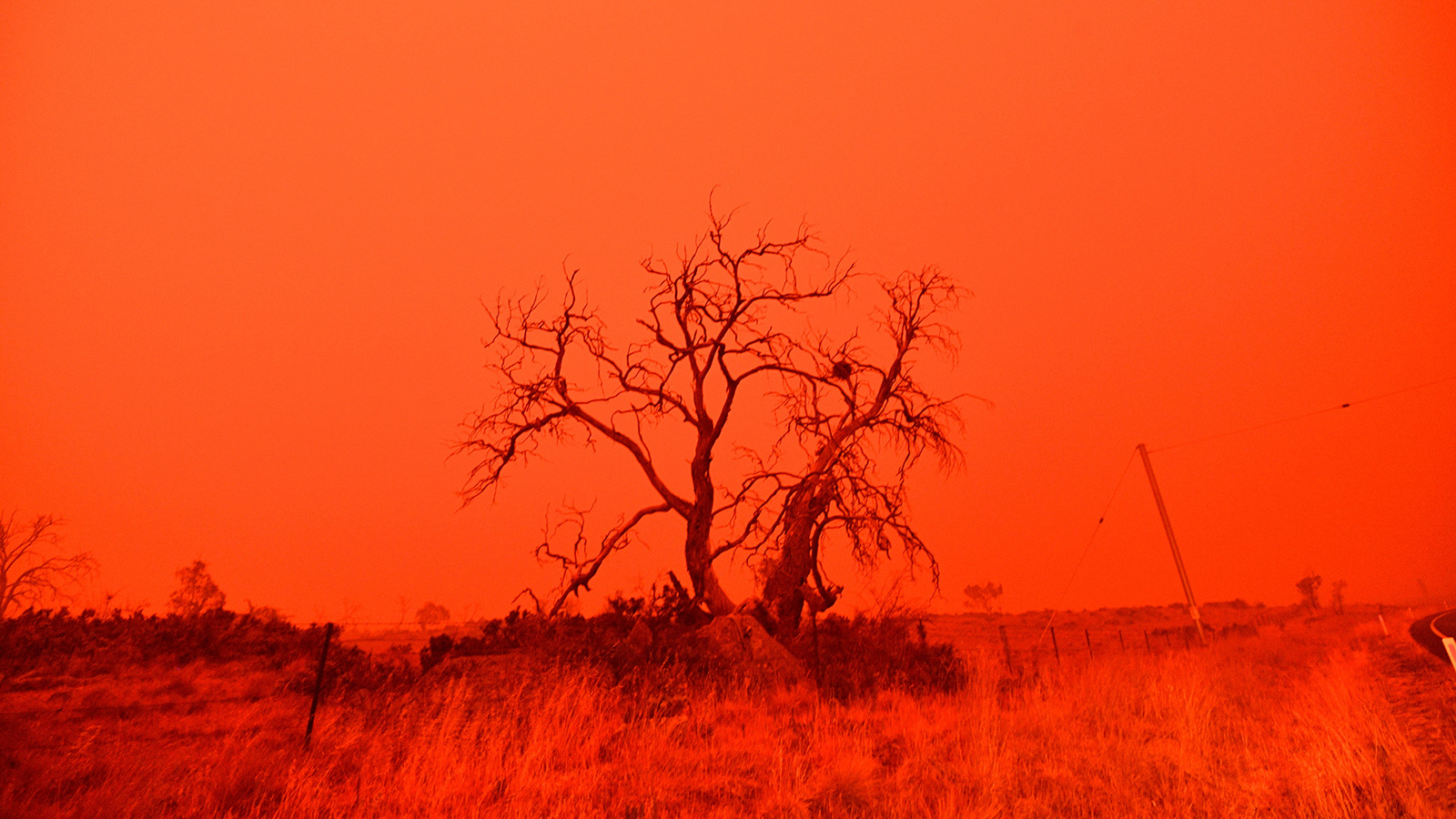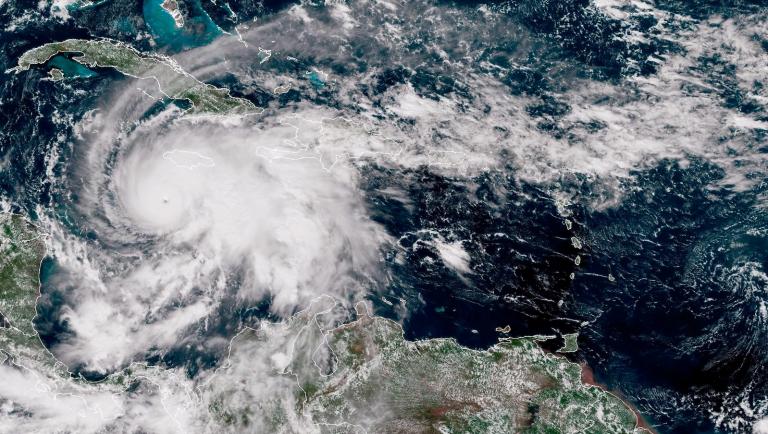Australia is in the midst of a devastating wildfire season that is being exacerbated by climate change. But the fires, which have been burning for months and could rage on for months to come, are also impacting the earth’s climate in several ways. Some of those impacts are well understood, while others lie at the frontiers of scientific research.
The most obvious climatic impact of the fires is that they’re spewing millions of tons of heat-trapping carbon dioxide into the atmosphere, contributing to a vicious feedback loop of heat and flame. But the fires are also kicking up lots of soot, creating a smoke plume that’s circling the globe and could hasten the melting of any glaciers it comes in contact with. Preliminary evidence suggests some of that smoke has even made its way into an upper layer of the atmosphere called the stratosphere, buoyed aloft by rare, fire-induced thunderclouds. That, too, could have subtle but far-reaching climate impacts.
The fires, which started burning at the end of Australia’s winter, raged across the eastern half of the country throughout the spring and kicked into high gear in the country’s populous southeast over the last few weeks. They’re a disaster of an unprecedented nature.
Exceptionally hot, dry, gusty weather, brought on by recurring ocean and atmospheric dynamics and amplified by the warming and drying effects of human-caused climate change, has made it all too easy for an errant match or a lightning strike to explode into a raging inferno. Which is exactly what’s been happening. To date, the Guardian estimates that more than 26 million acres of land have burned nationwide — a region larger than Indiana. That includes over 12 million acres in New South Wales alone, a dubious new record for the state.
Much of the land that’s burning is covered in eucalyptus forest, although flames have also razed farmlands, grasslands, heathlands, and even some patches of Queensland’s subtropical rainforests, said Lesley Hughes, an ecologist and climate scientist at Macquarie University in Sydney. Whatever the fuel source, the net effect on the atmosphere is a massive release of ash, dust, and a cocktail of different gases, including carbon dioxide.
From the start of September through early January, the wildfires released around 400 million tons of CO2, which is roughly the same amount the UK emits in an entire year, according to Mark Parrington, a senior scientist with the European Centre for Medium-Range Weather Forecasts. That’s not a record, he said, noting that considerably more carbon was emitted in 2011 and 2012, when very large fires raged across Australia’s northern territory and out west. But in New South Wales, this year’s wildfire emissions are off the charts.
By any measure, 400 million tons is a significant chunk of heat-trapping gases that will get mixed into the atmosphere, fueling more global warming. “It’s a great example of a positive feedback of climate change,” Hughes said. “It all comes together, unfortunately.”
In addition to carbon pollution, the fires are producing, well, regular air pollution. Since early November, vast smoke plumes have been wafting from eastern Australia all the way across the Pacific to the shores of South America. Just this week, Parrington said, forecasts from the Copernicus Atmosphere Monitoring Service showed carbon monoxide from wildfire smoke creeping into the South Atlantic, a “really clear indicator of just how intense those fires have been.”
As the smoke circumnavigates the globe, some of it is passing over New Zealand’s alpine glaciers, turning them an eerie caramel color. Lauren Vargo, a glaciologist at Victoria University of Wellington who recently traveled through New Zealand’s Southern Alps, said that the soot is “really clear and obvious” and that “most of the ice on the South Island” is likely to have been impacted. Vargo is currently studying aerial photographs of New Zealand’s glaciers going back to the 1970s. In 40 years of records, she hasn’t seen anything comparable.
Soot on glaciers does more than spoil hiking photos. It reduces the reflectivity, or albedo, of ice, allowing it to absorb more sunlight, which can hasten its melt, said Marie Dumont, the deputy scientific director of the French Meteorological Service’s Snow Research Center. Exactly how much extra melt New Zealand’s browning glaciers will experience over the coming weeks and months is unclear, but the fact that the color change is occurring during the summer, when the sunlight is fiercer and there’s less chance of fresh snow falling, isn’t a good sign.
“It’s super likely that it will accelerate the melt” of these glaciers, Dumont said, “at least for this year.” She added that she wouldn’t be surprised to see a similar, albeit smaller effect on some Patagonian glaciers, given that the wildfire smoke is passing over South America.
“With ice, when we are seeing a color change, it means the change in albedo is about 10 percent,” Dumont said. “That’s already huge. Even a 2 to 3 percent change is a lot.”
Not all of the wildfire smoke is settling on the earth’s surface. More of it is lingering 3 to 4 miles up in the troposphere, Parrington said, scattering light and resulting in ominous reddish sunsets. Where the smoke is densest, it’s likely impacting the weather, said Robert Field, a climate and atmospheric scientist at Columbia University. Over hard-hit parts of Australia, Field said he wouldn’t be surprised if temperatures are 10 to 20 degrees F lower on dense smoke days as soot blocks incoming sunlight. He emphasized, however, that any such effects will be very temporary.
Where the smoke might have a more far-reaching impact is in the stratosphere, a very dry, very cold part of the atmosphere that starts around 6 miles up and is home to fast-flowing jet stream winds. Pollution from the earth’s surface doesn’t often reach the stratosphere, but recent satellite data shows that Australia’s wildfire smoke has hit this lofty mark, a fact that speaks to “the power and intensity of the fires,” according to Claire Ryder, a research fellow at Reading University’s meteorology department.
The most likely explanation, she said, is fire-induced thunderclouds.
Also known as pyrocumulonimbus clouds, these menacing-looking storms, which form when heat from intense wildfires creates a powerful updraft, can blast particles into the stratosphere in a manner similar to a volcanic eruption. Over the past few weeks, the wildfires in southeastern Australia have spawned a series of pyrocumulonimbus events that Neil Lareau, a fire weather researcher at the University of Nevada Reno, called “really superlative.”
The smoke that’s reached the stratosphere may linger there for weeks to months, Ryder said. But exactly what impact it’ll have is an open scientific question.
Volcanic eruptions, she said, shoot tiny sulfate aerosols into the stratosphere. These particles reflect sunlight and can trigger temporary cooling at the earth’s surface. By contrast, fire smoke contains carbon-rich organic matter, including particles that are brown, gray, and even black in color. Black carbon, in particular, is a potent absorber of sunlight, and whether its presence in stratospheric soot will ultimately have a warming or cooling effect on the planet is unknown.
It will likely be years before scientists have teased out the full impact of this year’s wildfire season on the climate — first, the fires need to end. But it’s clear the effects have rippled far beyond Australia’s borders. As fire seasons become longer and more intense across the world, understanding this complex web of planetary impacts will only become more urgent.



